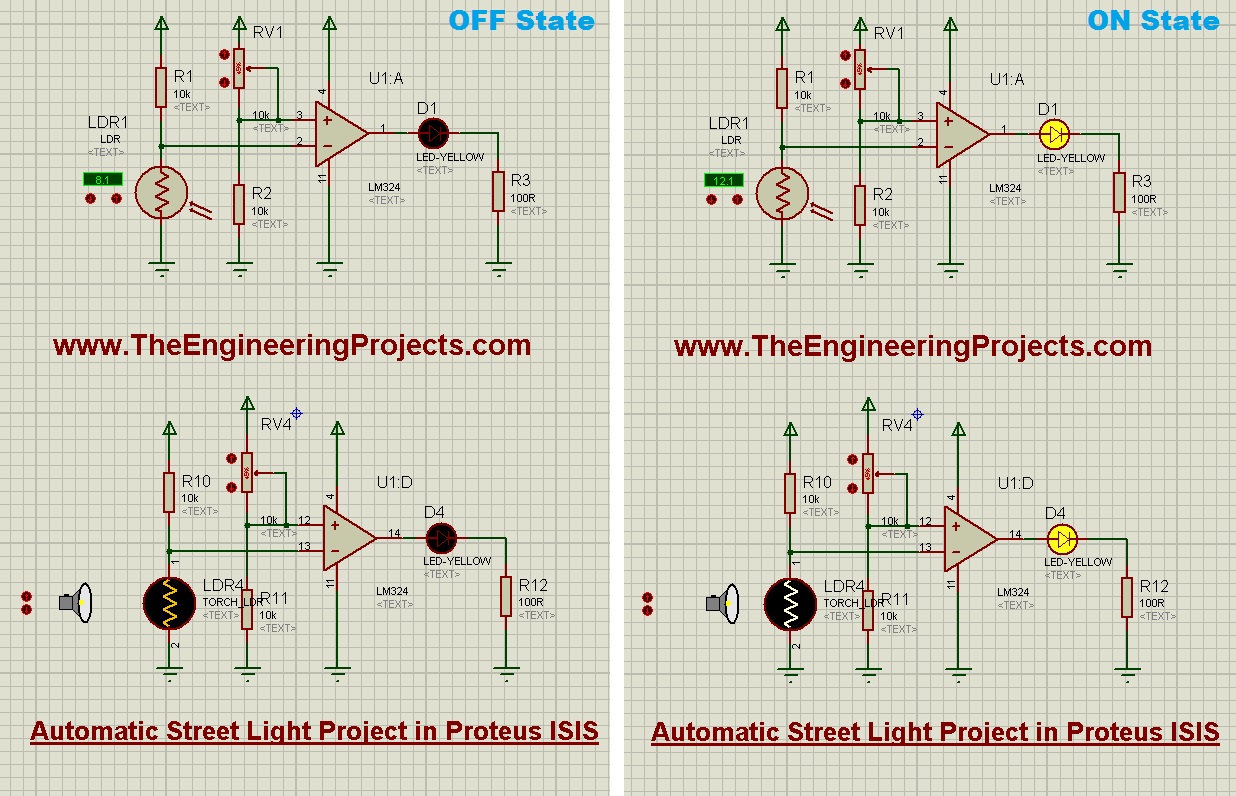
This project is about Automatic Street Light. You must have examined on your streets that the street lights turn ON at night while they turn OFF in the day. When I was a child then I think that someone turns ON the switch in the day and then turns it OFF at night but that's really not the case. :P
In fact, these lights are automatic and have a sensor in them which is known as LDR sensor. This sensor is used to detect the light intensity so if there's sun light in the surroundings then it simply turn OFF the street light and if there's no sun light then it turns ON the street light and that's how Automatic Street Light works. I have designed its simulation in Proteus ISIS software which you can download below. So, let's get started with Automatic Street Light Project in Proteus ISIS.
Note:
- You should also have a look at How to use LDR sensor in Proteus ISIS, if you wanna work on this project.
Automatic Street Light Project in Proteus ISIS
- You can download the working simulation of Automatic Street Light Project designed in Proteus ISIS by clicking the below button:
- You can download the Proteus simulation by clicking the above button but I would recommend you to design it on your own so that you get maximum knowledge out of it.
- So, let's design it on our own. :)
- First of all, design a simple circuit as shown in below figure:
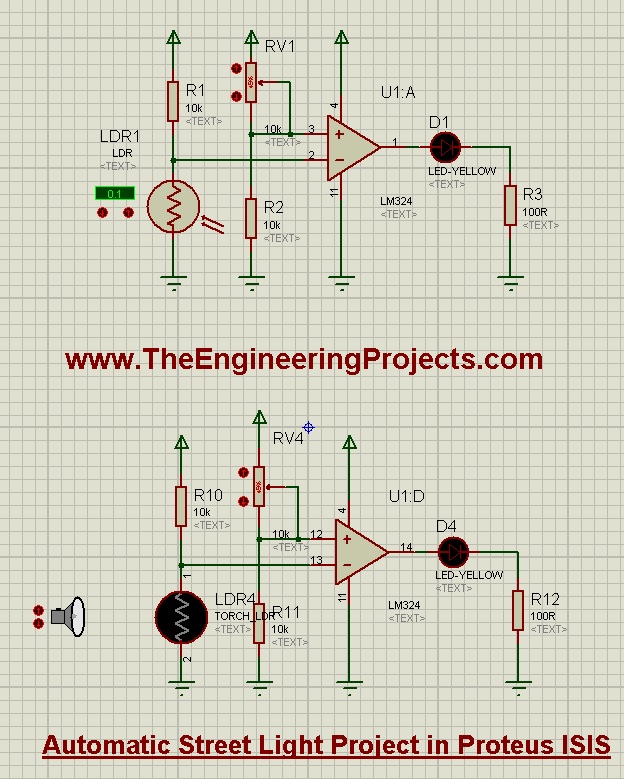
- You can see in the above figure that I have designed two circuits. Both of these circuits are exactly same but they have different LDR sensors.
- Proteus has two LDR sensors in its database that's why I have designed two circuit diagrams and have used both of them.
- Moreover, I have used LM324 IC in it which is getting the input from the LDR sensor at its negative pole and the LED is attached at its output.
- LDR is a Light Dependent Resistance which gives output when it detects light.
- The output of LDR is analog and it depends on the light intensity.
- If the light intensity is HIGH then LDR value will be HIGH if its LOW then value will be LOW.
- That's why I have placed a variable resistance which is used for setting the threshold value for LDR.
- Rite now when there is full light only then the LED will go HIGH otherwise it will remain LOW.
- So, let's now simulate this simulation of Automatic Street Light and have a look at the results:

- You can see in the above figure that in the OFF state the LED is OFF when LDR is not detecting light.
- Now in the ON state, when LDR detected the Light then the LED goes ON automatically.
- You must be wondering that its working on opposite logic i.e. when there's light then the Light goes HIGH and when there's no light then the Light goes LOW.
- Moreover, the output is just of 5V but the street lights are of normally 220V AC or 12V DC.
- So, let's add a simple Relay in front of this circuit so that we can add some lamp as shown in below figure:
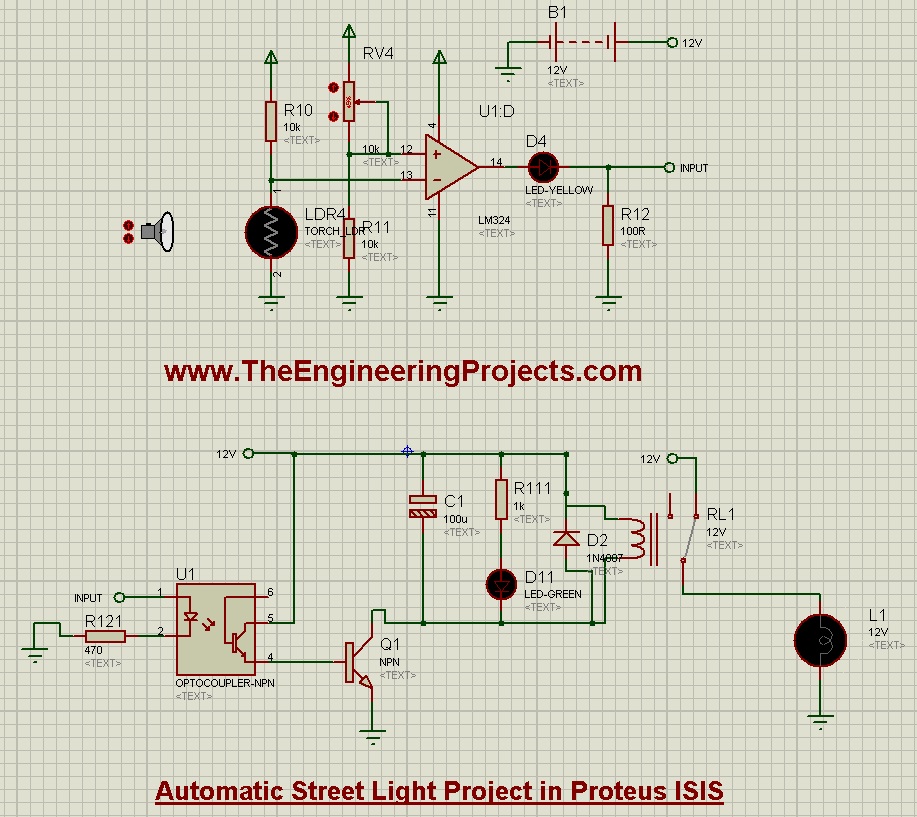
- Now let's have a look at the OFF state of this Automatic Street Light Project, shown in below figure:
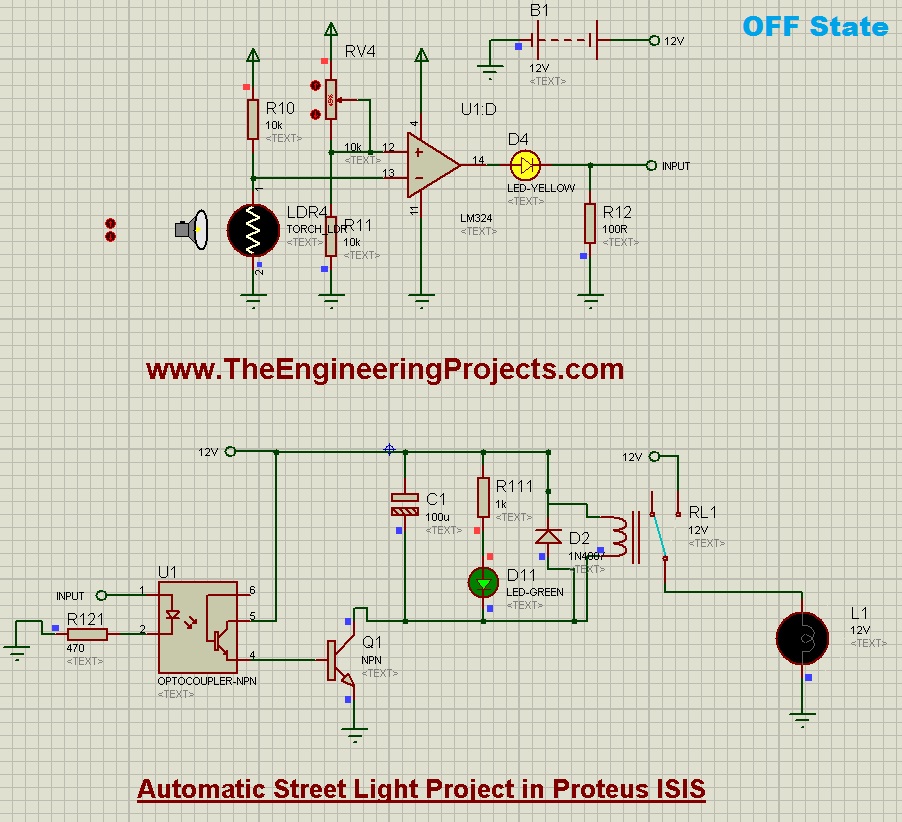
- You can see in the above figure that the LDR is detecting the light but the Lamp is OFF, so its like a day time. There's light and that's why street light is OFF.
- Now, let's have a look at its ON state in the below figure:
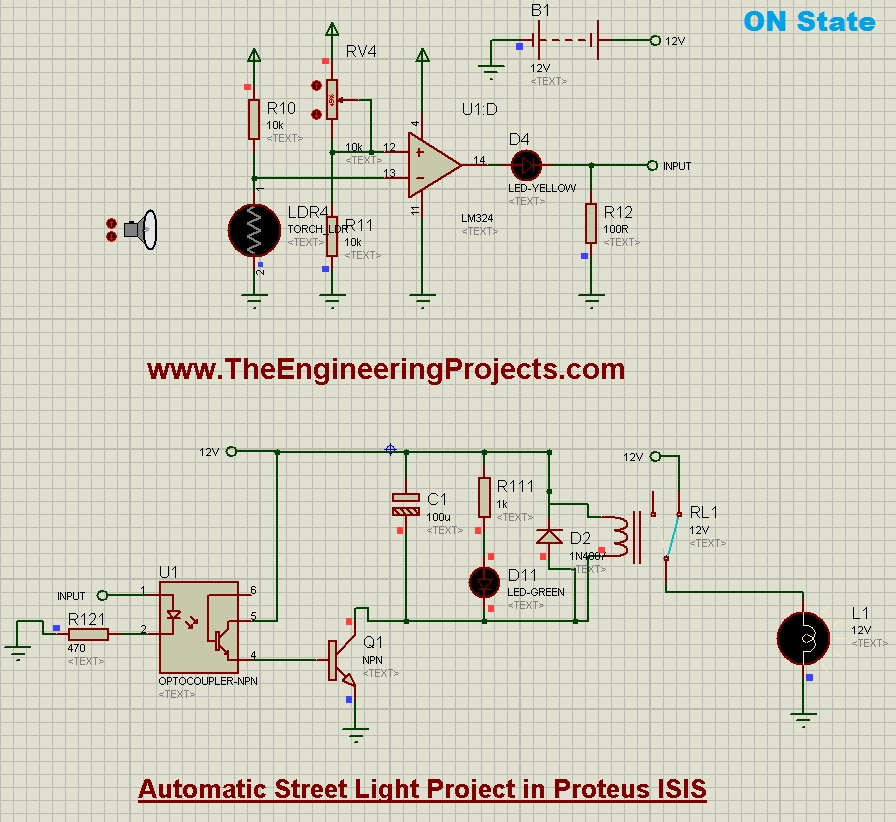
- Now you can see the LDR is not detecting any Light which means its a night time and that's why our lamp is ON.
- The below video will give you a better idea of How it works:
So, that's all for today. I hope you have enjoyed this Automatic Street Light Project in Proteus ISIS. Will meet you guys in next tutorial. Till then take care and have fun !!! :)



